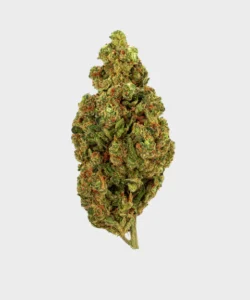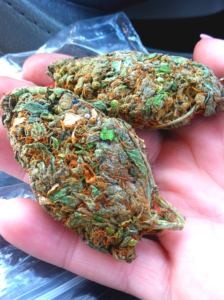
Weed in Al‑ʿUla: Context, Risks, and Realities
1. Introduction
Al‑ʿUla (also spelled Al-`Ula) is a region in northwestern Saudi Arabia, steeped in history, culture, and breathtaking landscapes. Known for its ancient rock-carved city of Hegra (Madā’in Saleh), the Old Town, dramatic sandstone formations, and an ambitious tourism development project, it is fast becoming one of the Kingdom’s marquee destinations. (Wikipedia) Weed in Al-`Ula
Yet for all its ancient history and modern revival, Al‑ʿUla lies within a country that enforces some of the strictest drug laws in the world. Cannabis (“weed”) is of particular concern — both legally and socially. In this article, we’ll explore what weed means in the context of Al-ʿUla, how Saudi Arabia’s laws apply, and what risks are involved for residents, visitors, or anyone thinking about “weed in Al-ʿUla.”
2. Legal Status of Cannabis in Saudi Arabia Weed in Al-`Ula
2.1 Strict Prohibition Under Saudi Law
Cannabis is strictly illegal in Saudi Arabia. (Wikipedia) The Law of Combating Narcotics and Psychotropic Substances criminalizes possession, use, cultivation, import/export, trafficking, and supply.
2.2 Severe Penalties
The consequences for cannabis offenses in Saudi can be extremely harsh:
- For personal use, first-time offenders may face 1–6 months in prison, possibly combined with whippings. (Wikipedia)
- For trafficking or dealing, the penalties escalate: 2–10 years in prison, whippings, or worse. Repeated dealing or large-scale smuggling may lead to capital punishment. Weed in Al-`Ula
3. Cultural and Religious Context Weed in Al-`Ula
3.1 Cannabis and Islamic Teachings
Saudi Arabia is governed by a strong interpretation of Islamic law (Sharia), and intoxicants are largely forbidden in this tradition. Cannabis is widely regarded as haram (“forbidden”).
Visitors to Al-ʿUla (or anywhere in Saudi) must be extremely careful. Importing cannabis in any form — flowers, oils, CBD products, edibles — is a criminal risk. Customs is vigilant.
And even CBD prescribed by a doctor in one’s home country is not a guaranteed defense: one user noted uncertainty over whether medical reports would be accepted.
3.4 Symbolic Risks — More Than Just Use
In Saudi Arabia, even the dance move “dabbing” (unrelated to the cannabis finishing technique) was controversial: in 2017, a Saudi performer was arrested for doing the move. According to reports, authorities associated it with cannabis use, deeming it culturally or symbolically problematic.
4. The Specific Context of Al‑ʿUla
Now let’s zero in on Al‑ʿUla itself. What does “weed in Al-ʿUla” mean in practical and cultural terms?
4.1 Al‑ʿUla: Heritage, Tourism, and Development
Al-ʿUla is not just an archaeological treasure; it’s a centerpiece of Saudi Vision 2030, the Kingdom’s plan to diversify its economy and boost tourism.
With that focus on heritage and high-value tourism, it is highly unlikely that the region would tolerate any open drug culture. The image of Al-ʿUla is carefully managed; it is a symbol of Saudi heritage, not counterculture.
4.2 Law Enforcement in Remote and Heritage Areas
Given the strict national drug policy, law enforcement in Al-ʿUla is likely robust, especially around tourist infrastructure and heritage sites. While Al-ʿUla is remote in geographic terms, the Saudi government treats all regions equally under narcotics laws. There is no legal carve-out for tourism zones when it comes to drug enforcement.
4.3 Health and Substance Abuse in Saudi Arabia
Substance abuse is a real concern in Saudi Arabia. A recent systematic review covering drug abuse in Saudi health‑facility populations found that cannabis (alongside amphetamines, benzodiazepines, heroin, and other substances) is among the most common substances misused. Though this refers to the general population and not specifically Al-ʿUla, it indicates that drug demand exists in the Kingdom.
4.4 Risk for Tourists and Expats
Tourists or expatriates visiting or working in Al‑ʿUla must be especially cautious:
5. Why “Weed in Al‑ʿUla” Is Largely a Myth — But Not Risk-Free
5.1 No Legal Market
There is no legal cannabis market in Al‑ʿUla (or anywhere in Saudi Arabia). No dispensaries, no CBD shops, no medical marijuana programs.
5.2 No Open Culture
Unlike in places where cannabis is socially accepted or even trendy, in Al‑ʿUla cannabis is unlikely to be part of daily life. The religious, cultural, and legal framework is wholly opposed to drug use.
5.3 Black Market Risks
While black-market drug activity may exist in Saudi Arabia, engaging in it is extremely dangerous. Trafficking or buying cannabis illegally in Al‑ʿUla could expose someone to serious legal consequences, including long prison sentences, corporal punishment, and potentially the death penalty in the most serious cases.
5.4 Health Risks and Lack of Harm Reduction
Given the illegality, harm-reduction services (safe consumption sites, needle-exchange, regulated testing) are unlikely to exist or to be accessible. For someone thinking of consuming cannabis in Al-ʿUla (or anywhere in Saudi Arabia), there’s no safe “regulated” way to do so.
6. Broader Implications: Tourism, Human Rights & Policy
6.1 Tourism vs. Legal Risk
As Al-ʿUla grows as a luxury tourism destination, potential visitors might wonder whether relaxed norms could accompany development. But so far, the national stance on drugs appears unyielding. Saudi Arabia’s push for tourism has not translated into liberalization of drug laws — especially not cannabis.
6.2 Human Rights Concerns
The severity of Saudi drug penalties raises significant human rights questions. Human rights organizations, such as Amnesty International, have criticized the country’s use of capital punishment in drug cases.
6.3 Public Health vs. Punishment
A purely punitive approach (imprisonment, flogging, death) often undermines public health strategies. There seem to be few, if any, publicly available harm-reduction or treatment-focused programs in regions like Al‑ʿUla specifically. For people with addiction or substance abuse issues, the risk of prosecution may deter them from seeking help.
6.4 The Case for Reform?
There is a growing global conversation about cannabis reform for medical and social reasons. While Saudi Arabia has not shown a willingness to liberalize its cannabis policies, particularly in high-profile destinations like Al-ʿUla, continued international pressure and human rights advocacy could spark debate — though meaningful change remains uncertain in the short term.
7. Practical Advice: What to Know If You’re Visiting or Living in Al‑ʿUla
- Don’t bring any cannabis or cannabis-derived products. Even CBD oils, creams, or gummies are risky.
- Avoid any involvement in black‑market activity. The legal risks outweigh any perceived benefit.
- Seek help for substance use discreetly and safely. If addiction or drug use is a concern, look for local, trusted medical resources — but be mindful of legal constraints.
- Respect local culture. Drug use is deeply stigmatized, and any association with cannabis could lead to severe social and legal consequences.
8. Conclusion
In Al‑ʿUla — a jewel of history and culture in the Saudi desert — weed remains illegal, dangerous, and socially taboo. Saudi Arabia’s drug laws are unforgiving, with penalties ranging from imprisonment to corporal punishment or worse for trafficking. The religious and cultural context further reinforces prohibition, leaving no room for an open or legal cannabis culture, even in such a tourist‑oriented region.
FAQs (Frequently Asked Questions)
- Is cannabis legal in Al‑ʿUla?
No. Cannabis is strictly illegal throughout Saudi Arabia, including in Al‑ʿUla. Possession, use, trafficking, or cultivation can lead to severe penalties. (Wikipedia) - What are the penalties for possessing weed in Saudi Arabia?
Penalties may include 1–6 months in prison for first-time personal use, possibly with whippings. (Wikipedia) Trafficking or distribution can result in 2–10 years in prison, whippings, or even the death penalty. - What happens if someone is caught trafficking cannabis?
Trafficking carries very harsh punishments, including long prison sentences, whippings, and in some cases, the death penalty. - Is there any risk for tourists just staying in Al‑ʿUla and not touching drugs?
As long as visitors do not carry cannabis or related products, the risk is minimal from a legal perspective. However, ignorance of the law is not a defense. It’s best to avoid any involvement with cannabis. - Are human rights groups concerned about Saudi Arabia’s cannabis laws?
Yes. Amnesty International and other organizations have criticized Saudi Arabia for executing drug offenders, many of whom are foreign nationals, and for a lack of fair trials in some cases.
I have used Global Weedworld (Globalweedworld@galaxyhit.com) at least 4-10 times and every time it has been a top notch.
He is the best local plug you can find around. He is very pleasant, friendly and fast. He is a lifesaver.
He sells top shelf WEED and other stuffs at moderate prices. I will always recommend this guy when people ask me my ” go-to”.
All you have to do is follow his instructions.
Just send him an email and I bet you will come back for more once you finish with what you bought because his quality is amazing.
Also Contact him on his telegram link telegramhttps://t.me/GlobalweedWorld
⚠️ Know that he do not have telegram channels only the telegram link above

The strain was exactly what I was looking for. It had that perfect balance, and the high was smooth. Also, the packaging was discreet and professional. Really impressed
I’ve been buying online for a while, but this shop’s service and product quality set them apart.
Everything was fresh, potent, and the customer service is outstanding
My first purchase and I’m hooked.
Excellent product and the customer support was super helpful in answering all my questions. Highly recommend this site
From browsing to checkout, everything was seamless. Delivery was on time, and the product exceeded my expectations. I’ll be recommending this to my friends
told me that he doesn’t accept cash and i thought he is one of those idiots who took advantages of people but i decided to give him a try by making the payment first using bitcoin, surprisingly he arrived within the time he promised me and i received what i ordered. thank you, Global weed world, whenever i return here you will always be my plug without doubt.
I’ve been buying from a lot of different places, but this one stands out. The bud is top-notch, and the prices are reasonable.
Will be ordering again soon! Amazing experience! The product was exactly as described,
and the packaging was on point—safe and odor-free. Thank you!
Alexander
Delivery was crazy fast, and the product… This place is setting the bar for online weed shops. Keep doing what you’re doing. You’ve got a loyal customer for life.
I was worried about ordering online, but the packaging was perfect completely. You can tell they care about their customers. Fast replies and reliable support.